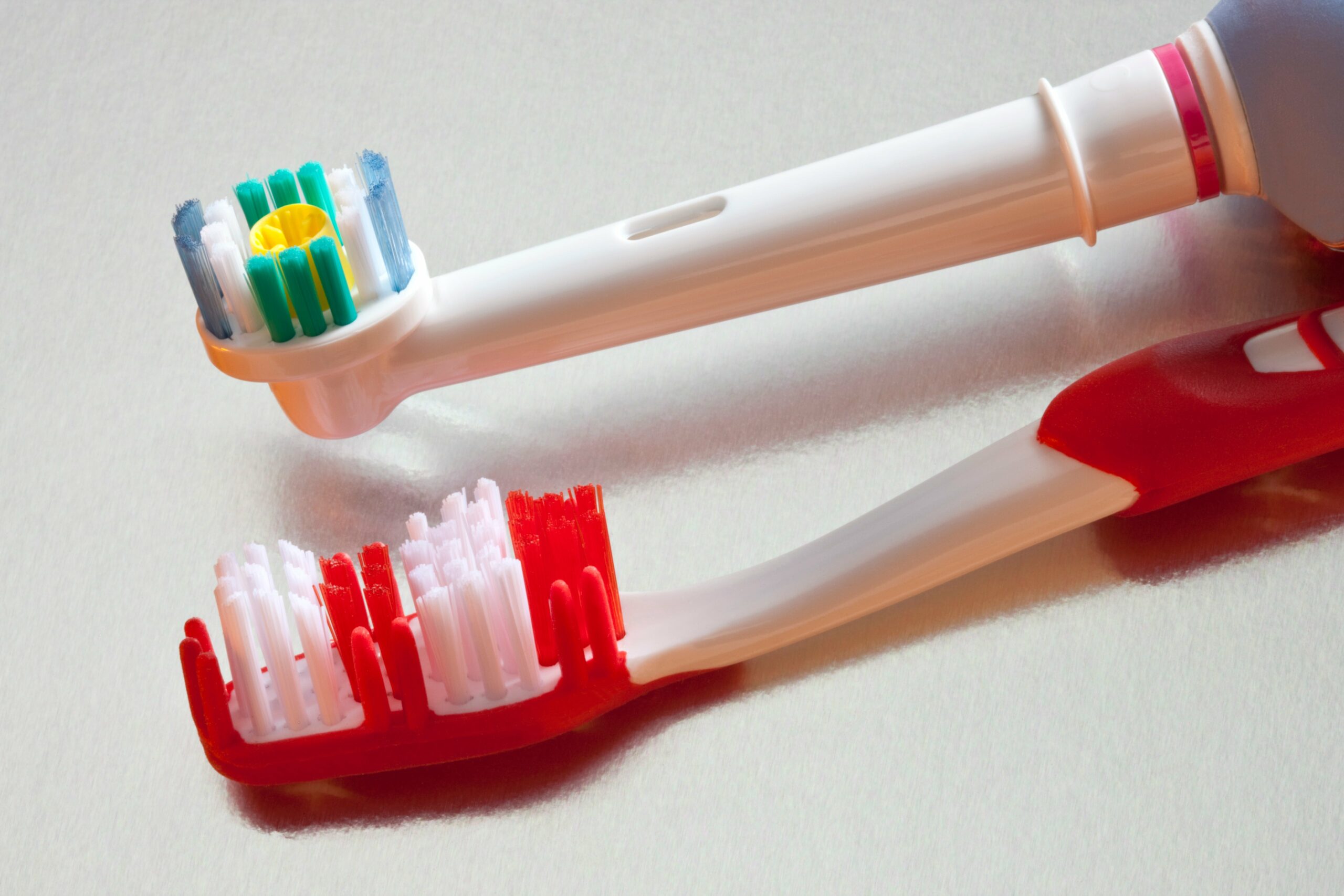- Phone: 1.404.373.4030
- Opening Hours: Mon-Fri 9AM-5PM Eastern

Disclosure: Noelle Copeland RDH is the oral care specialist and dental consultant to the Brilliant and Baby Buddy oral care lines.
Tooth Brushing mistakes are pretty standard, whether you are using an electric toothbrush or a manual one. I think my kids cornered the market with their ability to look like they were brushing their teeth, while in reality, they were barely getting the bristles around their mouth. For kids, it takes constant supervision and assessment.
Electric toothbrushes can make oral care a little easier for pesky little brushers who push the boundaries of maintaining self-care independently and consistently. Adults benefit for the same reasons as kids do. Bear in mind; however, electric toothbrushes are more powerful and can be misused a lot easier than their manual counterparts. Today I’m reviewing four common mistakes often made when using an electric toothbrush.
Each electric toothbrush should have specific instructions created by the manufacturer included for your education. For instance:
Rotating-Oscillating Electric toothbrushes-
Sonic Electric toothbrushes-
High-Frequency Sonic Toothbrush
A Sonic toothbrush with a 25K-45K frequency range, which’s considered a high-frequency sonic toothbrush, should be used by guiding it over the teeth. You are driving the brush around your mouth. It’s so powerful that you don’t need any pressure or scrubbing motions to move the bristles back and forth to remove plaque; the high frequency drives the bristles for you, so all you have to do is get the brush in your mouth and aim it correctly. Greater caution is required with high-frequency designs as they are more accessible to misuse and can cause gum tissue recession and sensitivity.
Low-Frequency Sonic Toothbrush
On the other side of the sonic toothbrush spectrum is low-frequency sonic toothbrushes, typically battery-powered units. Designs range from 10k- 20k. While they are much less powerful, they still provide sonic vibrations and power waves within the mouth to help remove plaque and bacteria. These waves are more tolerable and gentle, especially for sensitive mouthed individuals. Low-powered units require the regular brushing patterns most people are used to performing, brushing back and forth or in small circles.
One of my favorite features of an electric toothbrush is the built-in timer. You’d be surprised by how many people brush for less than 30 seconds! Having a built-in timer keeps you accountable for brushing purposefully and for long enough. The ADA recommends that everyone brush for at least two minutes, twice a day. This timer helps ensure you reach all the areas of the mouth. Most electric toothbrushes have a built-in 2-minute timer, with pulsing indicators for quad-paced brushing habits. Recently, some manufacturers have extended the brushing timer from 2 minutes to 3 minutes to encourage even more brushing accountability. Use your electric toothbrush until it shuts off on its own; that is your built-in accountability partner for oral care. Consider it your oral care trainer.
It’s easier to use an electric toothbrush head past its expiration time; for one reason, they are more expensive to replace, so I find that some will try and push the usage past a reasonable time frame. Any toothbrush needs to be regularly rotated every three months and sooner if the bristles are worn. Something to consider from the opposite side of the table is; if you are wearing your bristles down before a 3-month mark, you need to ponder that you may be brushing too aggressively. It’s best to consult with a dental professional to confirm this and go over this concern.
Some people are just heavy-handed brushers. They do a great job scrubbing away the plaque on their teeth, along with scrubbing away their tooth enamel. That applies to manual toothbrush users and electric toothbrush users. However, pressure per square inch amplifies if you are also using an electric toothbrush. Most dentists will not recommend an electric toothbrush to patients with very sensitive teeth, recession, or severe gum issues.
On the other side is not using enough pressure, and this comes into play quite often for kids who get the brush in their mouth but end up doing minimal “brushing” with it. Parental supervision is necessary. The best tools are utterly useless if they are misused. One of the benefits of an electric toothbrush for children is that higher-frequency toothbrushes do the work. However, kids still need to know how to brush correctly and gauge the appropriate pressure. My recommendation is:
Be sure to check out the best electric toothbrush for kids if you explore options for a baby electric toothbrush by visiting https://brilliantoralcare.com/collections/sonic-toothbrushes Our sonic toothbrushes are for ages three years and up.
© 2021 Compac Industries. All rights reserved. This article provides information about “oral health topics” as expressed through the perspective and experience of the author. The information provided does not substitute professional advice or counsel, including diagnosing or treating any condition. Always seek the advice of your dentist or another qualified healthcare provider with any questions you may have regarding a medical condition, an oral condition, an illness, or treatment of any listed or nonlisted situation above. By using this site, you signify your assent to our Terms and Conditions. If you do not agree to all of these Terms and Conditions, do not use this site.
Noelle Copeland RDH is an Oral Care Specialist and Dental Consultant who provides content for Brilliant Oral Care and Baby Buddy.


DISCLOSURE: Noelle Copeland RDH is an Oral Care Specialist and Dental Consultant who provides content

DISCLOSURE: Noelle Copeland RDH is an Oral Care Specialist and Dental Consultant who provides content

We believe that all people are fearfully and wonderfully made and designed in the womb for a grand purpose.
Useful Links
Copyright © 2023 Compac Industries | All Rights Reserved.